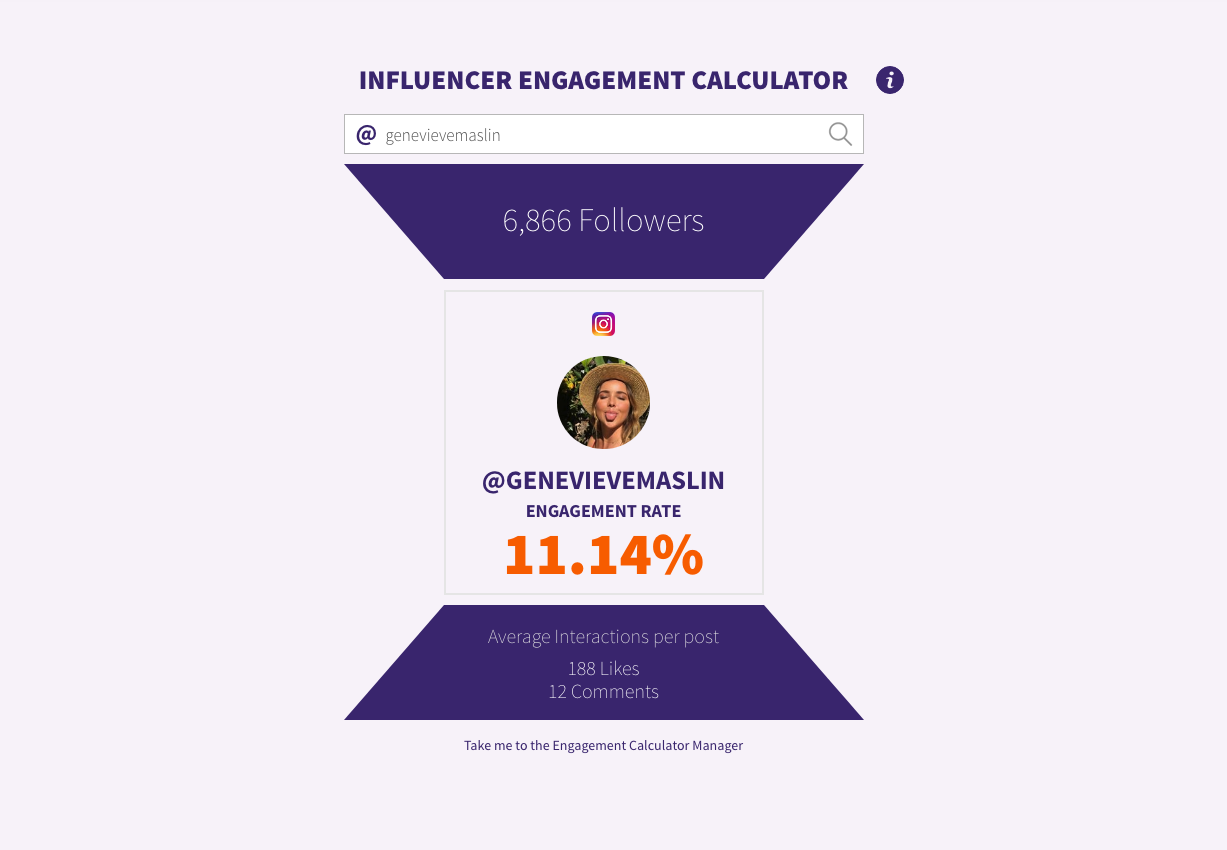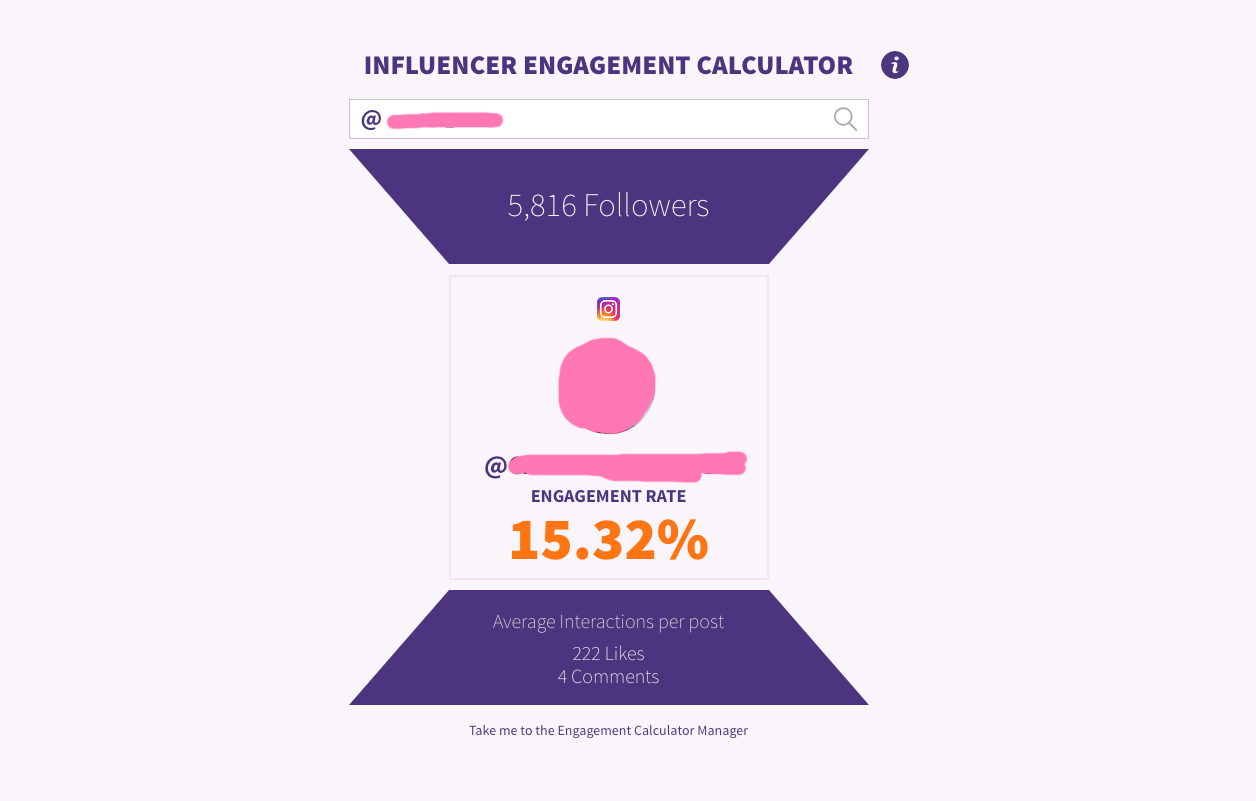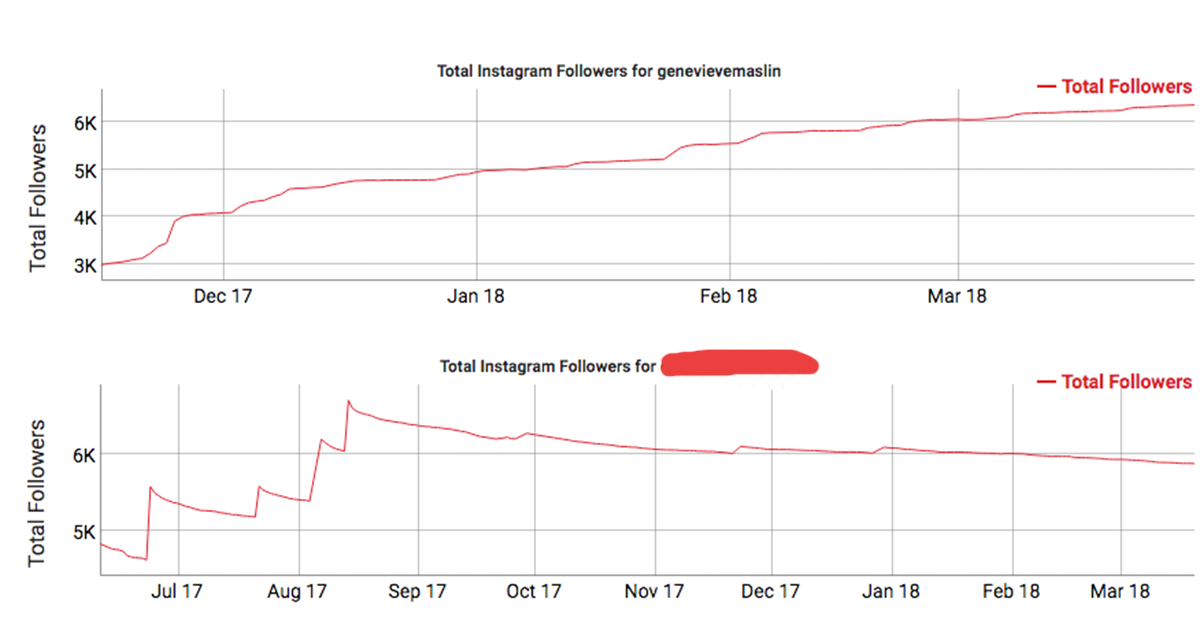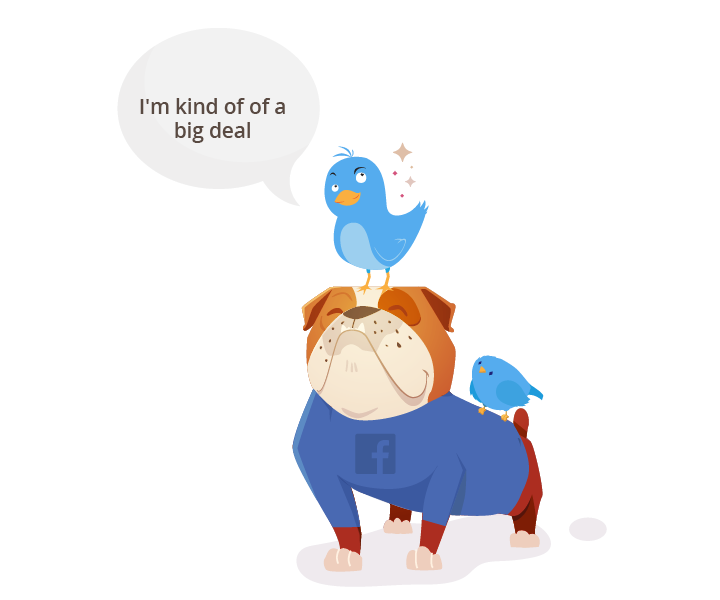Can you tell if an influencer has fake followers or fans? Learn how to tell the difference between the real deal and the overinflated egos with our expert tips and tools to analyse your potential influencer partners. After reading you will be able to measure your influencers influence like a pro!
Oh, influencers. They’re a fickle bunch. There are those whose posts boost your brand into the heavens, and there are those who take your dollars and give you bupkus.
If you have ever paid big bucks for an influencer only to see no real results, the fault may lie in their followers.
Follower counts are often seen as the ultimate metric of an influencer’s worth. Investing in an influencer with a 100k count over one with a 50k seems like the obvious choice.
But not all 100k followings are built the same and if you’re paying big bucks to show your product to 99k robots, you might reconsider your investment.
Here’s four ways to tell if their fan count is fake.
1. Big followers, small engagements.
An influencer with followers in the thousands but likes and comments in the tens is a huge red flag. It is highly likely their followers were bought en masse. Unfortunately, this kind of fake account is few and far between.
Influencers are generally savvy enough to not just buy followers but buy likes and comments too.
Determining whether they’re the real deal requires a closer look.
2. High followers, low engagement rate.
Engagement rates tell us how many people interacted with a post after viewing it. It takes into consideration everyone who saw the post and how many of those interacted with it.
Engagement rates can be calculated in a few different ways but a simple mechanism for Instagram is: total engagements divided by reach or impressions, multiplied by 100.
For example, if Janie, a 50k influencer received 100 likes for a post but reached 10000 people.
Her engagement rate would be calculated by: (100 / 10000 x 100 = 1%). Buh-bow.
A good rate generally depends on how many followers the influencer has collected.
We use the following rule of thumb: If they’re under 10,000 followers, you can expect around 9%; if they’re around the 50k mark, expect around 6%; and if they’re 100k, you’re looking at around 4%. Scale accordingly (and roughly).
If you want to calculate their rate in two clicks and one blink, you can use
Phlanx’s engagement calculator.
We tested it with one of our influencers, Genevieve, and were given the engagement rate of 11.14%.
We then tested Genevieve against another influencer with a similar follower count and demographic. We’ve obscured their identity because naming and shaming is not nice.
The engagement rate for this influencer is significantly higher, so the easy conclusion is that this second influencer is a goer.
But let’s take these two case studies and look even closer, by viewing their growth spikes.
3. Growth Spikes!
Spikes in follower counts can be good indicators of bought followers. Sometimes an influencer will earn a spike organically by having a post go viral but if you can see a spike but can’t attribute it to a hugely popular post… ba-bow. FAKE.
Tools such as
Socialblade will chart an influencer’s growth so you can analyse whether they’ve had steady growth (organic) or if they went from zero to hero.
We’ve taken the two above accounts (Genevieve and Mystery User) and put them through Social Blade’s test below.
The top chart, belonging to Genevieve, indicates steady growth with one peak just before December of 2017. We queried Genevieve about this, and she pointed to how she’d been tagged in a post with a celebrity at that time and had felt a flow-on effect.
The below chart, belonging to our nameless influencer, has a much jumpier rate of growth with continual peaks before a steady decline. Keep in mind it was this influencer who initially appeared to have a stronger engagement rate.
What we can deduce from this second test is the nameless influencer is likely to be being followers, likes and potentially even comments too.
SO HOW DO YOU TELL WHO IS REAL!
4. Comment Types
Analysing comments is one of the easiest ways to spot an influencer who’s buying engagements on the side.
Comments such as “cool pic!” or “love it” are dime a dozen, as are comments consisting solely of emojis.
The accounts that generally write those comments are commonly overseas, possess obscure usernames and have feeds that are largely nonsensical.
As a side note: if your influencer is a big dog on Twitter, you can use a tool such as
KRED to analyse their mentions, replies, retweets and followers. It’ll analyse their account before spitting out an “Influencer” and “Outreach Score” (read: engagement score). The influencer score is out of a hundred and the outreach is out of ten.
KRED openly say that influence is calculated by how often an individual “inspires action” and is scored using mentions, followers, retweets on Twitter and posts, likes and other Facebook engagements.
Outreach is calculated by your “Generosity To Others” and is scored using follows, mentions, retweets and likes, posts and replies on Facebook.
Although if you’re using a Twitter influencer in the Australian market, you might have a bigger problem than whether your influencers are fake. ;)
Concerned your influencers are tricky tigers? Give us a call and learn how Hello Social can make your brand stand out.













